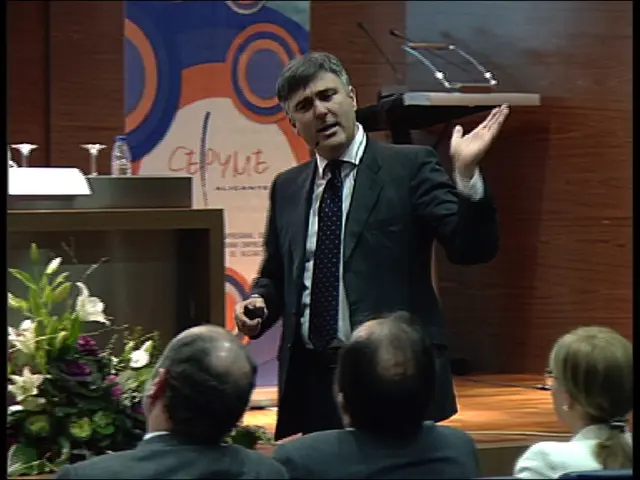Realizing Your Retirement Aspirations (Even with Your Apprehensions)
As retirees contemplate the next chapter of their lives, many harbour dreams of downsizing to a smaller home, moving to a vibrant retirement community, or paying off their home to enjoy a nest egg that allows them to travel, spend time with family, and pursue hobbies without work constraints. However, these dreams are often clouded by fears, such as depleting savings, unexpected healthcare costs, and the loss of independence.
According to the 25th Annual Transamerica Retirement Survey, the top three retirement dreams are travelling (65%), spending more time with family and friends (57%), and pursuing hobbies (49%). Yet, 40% of retirees worry about depleting their savings, and possible long-term care costs were also listed as a fear.
To help retirees bridge this gap, practical strategies have been proposed, focusing on financial security, healthcare costs, and maintaining purpose.
Flexible Retirement Planning
Adjusting your retirement timeline to optimise Social Security benefits can strengthen financial security. By delaying benefits, retirees can increase their guaranteed monthly income up to age 70. Phased retirement options, such as part-time consulting, freelance work, or small business ventures, can provide income and purpose while easing the transition from full employment.
Structured Income Management (Bucket Strategy)
Dividing retirement assets into buckets based on when funds will be needed—short-term (liquidity), intermediate-term (stability), and long-term (growth)—reduces the risk of tapping investments at market lows and ensures stable income to cover expenses like healthcare. Using annuities or other products that allow some liquidity without penalties maintains balance between stability and flexibility.
Retirement Income Planning
Developing an income withdrawal strategy focused on timing (when to draw from different accounts) and tax efficiency can sustain lifestyle and cover healthcare without overspending. Understanding how different sources like pensions, Social Security, and investment withdrawals integrate to provide a reliable income floor covering essential expenses is crucial.
Addressing Healthcare and Long-term Care Costs Early
Discussing potential healthcare needs and preferences with family and advisors helps plan for costs and coverage. Long-term care insurance or dedicated savings aimed at possible elder care costs can reduce unexpected financial stress during retirement.
Maintaining Sense of Purpose and Emotional Well-being
Engaging in meaningful activities such as volunteering, hobbies, or continuing education helps foster purpose beyond finances. Working with financial advisers who also serve as behavioural coaches can help retirees focus on goals and values rather than just market returns, reinforcing confidence through market volatility and life changes.
Family Communication and Legacy Planning
Openly discussing retirement goals, financial plans, healthcare preferences, and estate plans with family can avoid misunderstanding and support intergenerational continuity of values and support.
These strategies provide a holistic approach to retirement that manages financial risks, plans for healthcare costs, and sustains emotional and social engagement, which are essential to bridging the gap between retirement hopes and fears.
Unexpected expenses, such as those related to gifting or funding grandkids' education, can drain savings. Only around half of all boomers and Gen Xers believe they'll be financially ready for retirement when the time comes, per the 2025 State of Retirement Planning study by Fidelity. Retirees may also fear chronic conditions, cognitive decline, dementia, or Alzheimer's disease.
Retirement offers time for pursuing interests like painting, gardening, golf, or volunteering. However, rising housing costs, property taxes, or maintenance expenses can strain fixed incomes, and loss of independence is another concern.
Interestingly, almost one-third of workers dream of doing some form of paid work in retirement, with self-employed and employed workers being more likely than unemployed workers to dream of doing so. A 2025 AARP study noted that 25% of retirees struggle with finding purpose post-career.
By implementing these strategies, retirees can navigate their golden years with confidence, financial security, and purpose, making their dreams a reality while mitigating their fears.
[1] "Phased retirement: A win-win for employers and employees." (2020). Society for Human Resource Management. Retrieved from https://www.shrm.org/resourcesandtools/hr-topics/retirement/pages/phased-retirement-a-win-win-for-employers-and-employees.aspx
[2] "The bucket approach to retirement income planning." (2021). Investopedia. Retrieved from https://www.investopedia.com/terms/b/bucket-approach-to-retirement-income-planning.asp
[3] "Retirement income planning." (2021). AARP. Retrieved from https://www.aarp.org/retirement/planning-and-social-security/info-2021/retirement-income-planning.html
[4] "Long-term care planning." (2021). AARP. Retrieved from https://www.aarp.org/caregiving/planning-support/info-2021/long-term-care-planning.html
[5] "The role of behavioural finance in retirement planning." (2021). Investopedia. Retrieved from https://www.investopedia.com/terms/b/behavioral-finance-retirement-planning.asp
Read also:
- A Business Model Explained: Its Purpose and Benefits for Your Venture
- Deep-rooted reinforcement of Walkerhughes' acquisitions through strategic appointment of Alison Heitzman
- Unchecked Management of HP Dams Leads to Environmental Disaster: RTI Reveals
- Nordstrom taps prominent New York residents for their second advertising campaign in the city.





